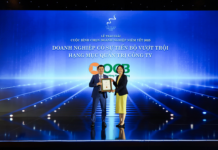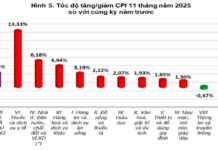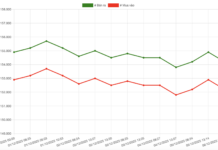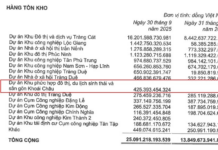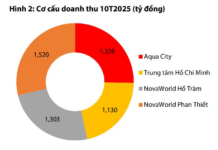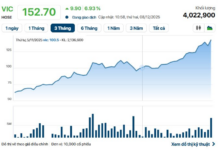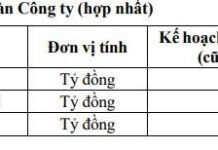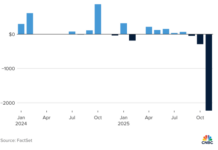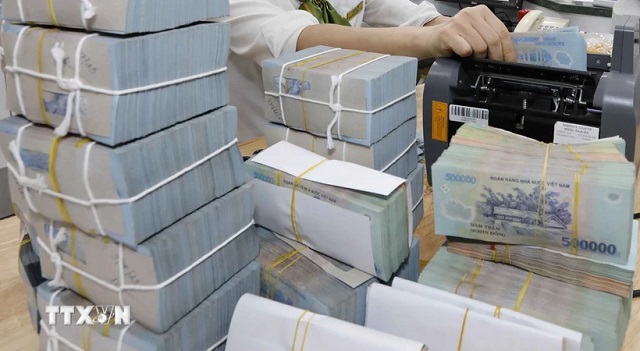
|
A customer conducting a transaction at a bank. (Photo: Tran Viet/VNA)
|
After a period of stagnation and facing numerous challenges, consumer lending activities in Vietnam are showing signs of recovery.
Especially with the new legal framework, the consumer finance market is expected to become more vibrant in the coming time with stronger participation from commercial banks.
Regaining Growth
The core business has witnessed quite positive growth, while bad debts tend to decrease slightly. This is the common situation of most consumer finance companies in the first half of this year after the second-quarter financial report was released recently.
At a recent investor conference, Dam The Thai, Deputy General Director of HD Saison Finance Company, said that HD Saigon’s business results grew impressively in the first six months of this year, with outstanding loans increasing by 9% over the same period to nearly VND17 trillion. Notably, the growth of new customers at this finance company reached nearly 20%.
HD Saison’s pre-tax profit accordingly reached VND601 billion in the first half of this year, doubling that of the same period last year and nearly equal to last year’s profit (VND660 billion).
According to Dam The Thai, the main factor helping HD Saison achieve this result is thanks to the net interest margin (NIM) continuing to improve, reaching 30%, up from 29% in the same period.
Meanwhile, asset quality has improved, with the bad debt ratio as of the end of June being 7.5%, slightly down from 7.9% in the same period last year. With positive results in the first half of the year, HD Saison’s leaders are confident in the plan to increase credit growth by 25% and profit after tax reaching or exceeding VND1,000 billion set for this year.
The second-quarter financial report of EVNFinance Joint Stock Finance Company also recorded a bright business picture and improved loan quality.
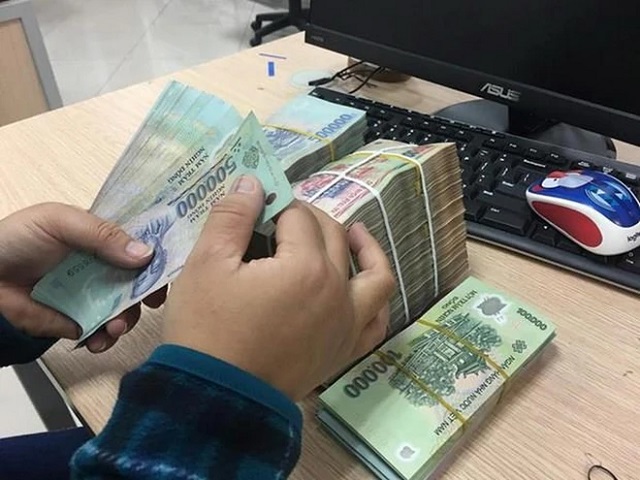
|
In the second quarter, EVNFinance earned more than VND385 billion in net interest income, up 549% over the same period last year. (Photo: Vietnam+)
|
Specifically, in the second quarter, EVNFinance earned more than VND385 billion in net interest income, up 549% over the same period last year. With the main source of income increasing strongly after deducting expenses, EVNFinance’s pre-tax profit was more than VND146 billion, up 57% over the same period. Accumulated in the first six months of this year, the company reported a pre-tax profit of VND311 billion, up 56% over the same period, although it doubled the provision for credit risk.
Notably, as of June 30, EVNFinance’s bad debts decreased by 38% over the beginning of the year; in which bad debts of groups 4 and 5 both decreased strongly. The ratio of bad debts to total loans to customers was only 0.71%, down from 1.3%.
At FE Credit – a subsidiary of Vietnam Prosperity Joint-Stock Commercial Bank (VPBank) also recorded a positive recovery in the first half of this year.
VPBank said that following the recovery of consumer demand, core credit in the consumer finance segment of FE Credit in the second quarter grew by 3.5% compared to the fourth quarter of 2023. Disbursement volume in the quarter increased by 9% over the previous quarter and accumulated in the first six months increased by 53% over the same period last year.
According to VPBank, the comprehensive restructuring to improve portfolio quality, enhance debt recovery efficiency, and optimize the operating apparatus has gradually brought the consumer finance company back to a new growth cycle.
Expecting more participation from banks
Besides the recovery of finance companies, the consumer finance market is expected to improve in the coming time when the economy is forecast to continue to grow positively and new policies promote stronger participation from commercial banks.
Especially, at the beginning of July, the State Bank of Vietnam issued Circular No. 12/2024/TT-NHNN amending and supplementing a number of articles of Circular No. 39/2016/TT-NHNN allowing credit institutions to lend amounts of less than VND100 million without requiring customers to provide a feasible capital use plan. This mechanism is expected to promote the participation of commercial banks in consumer lending activities and curb black credit.
According to Nguyen Linh Phuong, Deputy Director of the Monetary Policy Department of the State Bank of Vietnam, the regulation on loans of less than VND100 million does not require customers to have a feasible capital use plan. Instead, customers only need to provide minimum information on the legal use of capital and financial capacity before the credit institution lends capital.
These changes make it easier for customers to access small loans, stimulating the development of consumer finance and curbing black credit in the market.

|
Dao Minh Tu, Deputy Governor of the State Bank of Vietnam. (Photo: Minh Duc/VNA)
|
Dao Minh Tu, Deputy Governor of the State Bank of Vietnam, also said that Circular No. 12/2024/TT-NHNN will facilitate consumer lending activities. This is not a loose regulation but aims to promote consumer finance and create real convenience for people to access consumer loans, especially people in remote areas and low-income earners. Some large banks such as Vietcombank and VietinBank, which used to focus on the corporate lending segment, have now shifted to consumer lending.
A report by Fiin Group also shows that the consumer finance market is entering a new growth cycle. The market recovery will be more evident from the second half of this year.
In the short term, the recovery path will be supported by positive signs from the macroeconomic environment, including the recovery of production and export industries, which are expected to improve credit quality and credit demand of workers and manual laborers, who are low- to middle-income earners – the main customer segment in the consumer lending field, and from the digitization of the customer journey, improved customer experience, and increased customer retention rate.
Despite many positive recovery signs, however, the consumer finance market is also facing many challenges, especially in the context of rising bad debts at credit institutions.
According to Nguyen Quoc Hung, Vice Chairman and General Secretary of the Vietnam Banks Association, the bad debt situation in the consumer lending segment is still quite worrying.
Recently, there have been groups on social networks that have been teaching each other how to default on loans and delay repayments… Despite the lenders’ measures and the involvement of competent authorities, debt collection from this group of customers is still very difficult and challenging.
Therefore, to make the consumer finance market truly revive and grow sustainably, experts said that many changes are needed in improving the legal environment, especially the regulations guiding debt collection.
On the side of consumer lending organizations, besides being transparent in debt collection activities, borrowing costs, etc., it is also necessary to have measures to check and supervise the use of borrowed capital for the right committed purposes and repayment by customers. This will help credit institutions limit bad debts and ensure the recovery of principal and interest in full and on time as agreed.
Borrowers themselves also need to be aware of responsible consumption and timely repayment…
Hua Chung
Why is Home Credit Vietnam valued at nearly 22,000 trillion – twice or three times the market capitalization of many banks?
SCB Thai Bank has acquired 100% of the capital contribution of Home Credit Vietnam for 800 million euros (equivalent to nearly 22,000 billion VND). This is the second largest M&A deal in the financial company sector in Vietnam, following the agreement to purchase 49% of FE Credit’s capital by SMBC with a value of $1.37 billion in 2021.
Financial companies change ownership frequently
While consumer lending is facing difficulties, the market for financial company acquisitions is vibrant, reflecting the potential of the consumer lending market.






